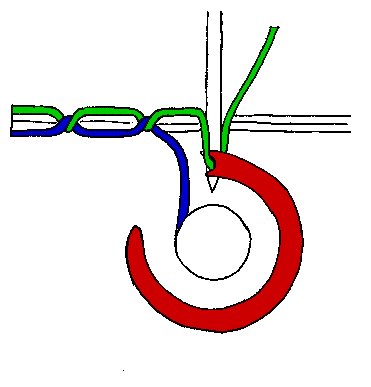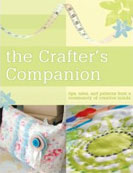Japanese Primer
Saturday, September 13th, 2008
During the last couple of months I added some Japanese sewing books to my collection. I love the clean designs of the dress styles and home accessories depicted therein. Although the instructions are often accompanied by detailed drawings that allow one to follow along without having to read the actual descriptions of the steps, I’ve decided that in order to make something like the dress above, I’d like to have a better idea of what I’m supposed to do. Luckily some very generous people have posted translations of Japanese sewing and knitting terms.
Sewing
Moving Hands has an initial collection of terms and also refers those of you who read French to Japan Couture Addict’s. This blog documents its members’ Japanese sewing adventures. In the sidebar you can find an additional collection of links to sewing terms (including Batty Chan’s excellent collection of Japanese terms translated into English), as well as book and fabric sources. For those of you interested in making softies, My Little Mochi has a list of related terms.
Knitting
A comprehensive guide to Japanese knitting terms and charts is available at www.tata-tatao.to. This site covers Japanese needle sizes, yarn related terms, and includes a Japanese-English knitting dictionary. Ravelry maintains a Japanese knitting and crochet group where you can discuss your knitting experiences. Rhonda of Japanese Knitting Patterns chronicles her experiences with Japanese knitting patterns and provides links to further resources. Finally, the Needle Arts Book Shop offers a free 8-page pdf brochure with detailed steps on how to decipher a Japanese knitting pattern.
Crochet
I wasn’t able to find a collection of crochet abbreviations. Does anyone know of a resource?
Finding Patterns
Crafting Japanese is a good place to start to look at some crafting books. This blog lists pattern books by ISBN number together with pictures of completed projects. You can browse for and purchase books in the hobby/lifestyle/home arts section of YesAsia an Asian online bookstore. Ebay also turns out to be a good resource. Many vendors display several pages of the books for sale giving you a better idea of the kind of patterns you might find. If you are in an enterprising mood, you can also search Amazon.co.jp with the help of Google’s web page translator. Just type in the URL of the page you wish to translate in the “Translate a web page” box and select the appropriate language.
Finally there is Flickr; in addition to the pictures, the Japanese Sewing group has good resources in the discussion section. The Crafting in Japanese group shares a variety of different crafts and again provides good information in the discussion section.
























